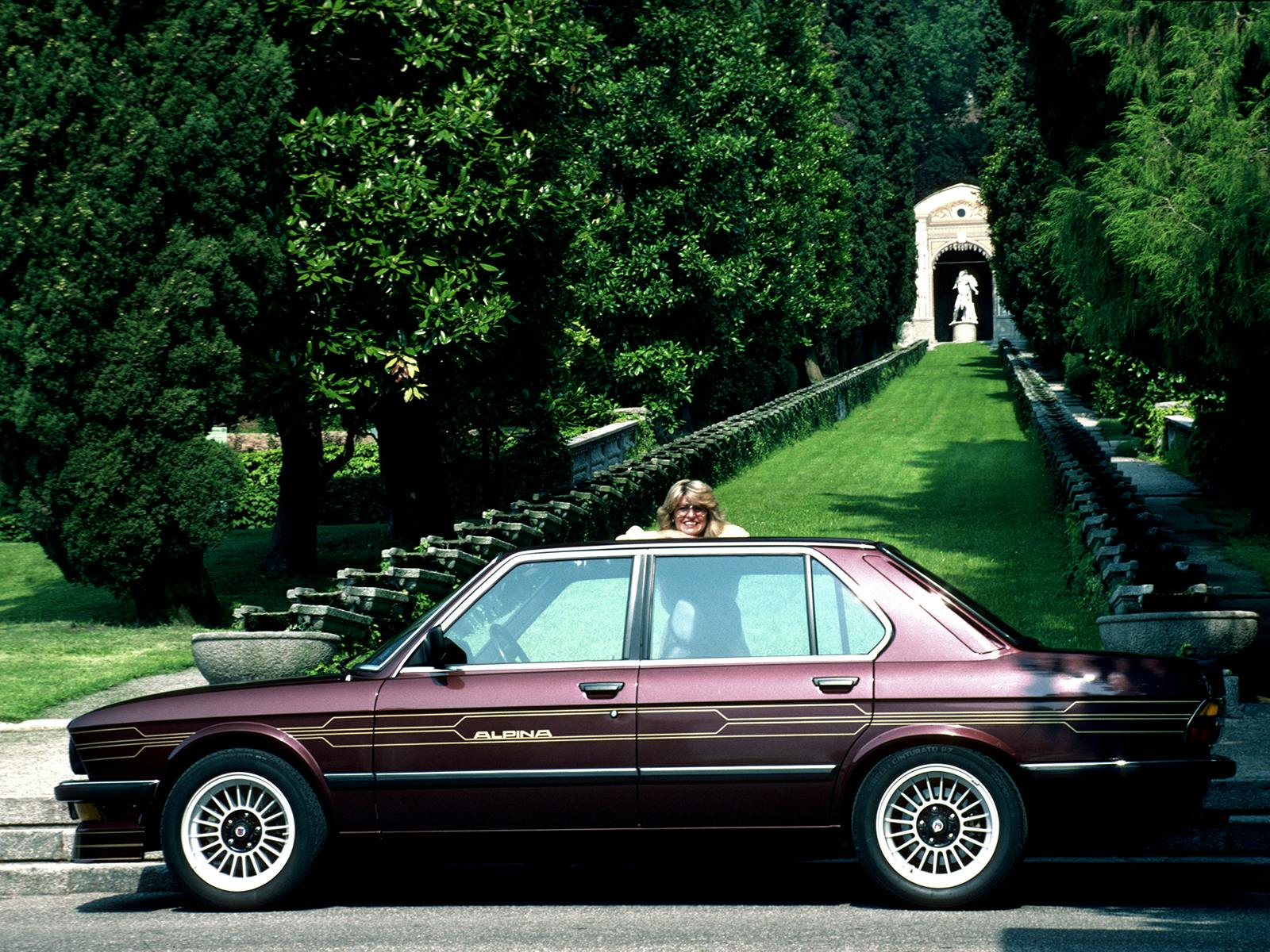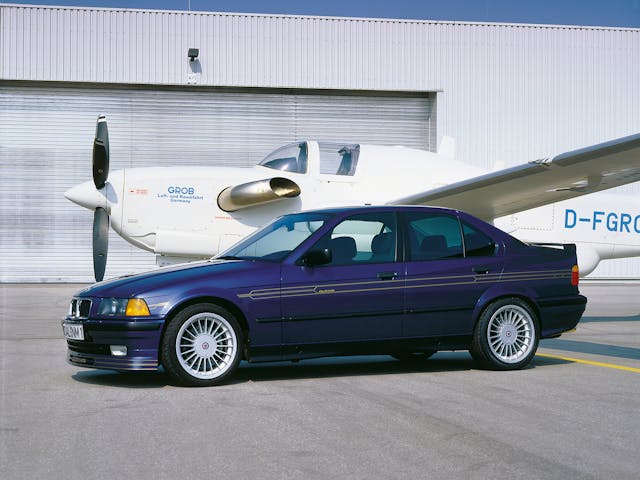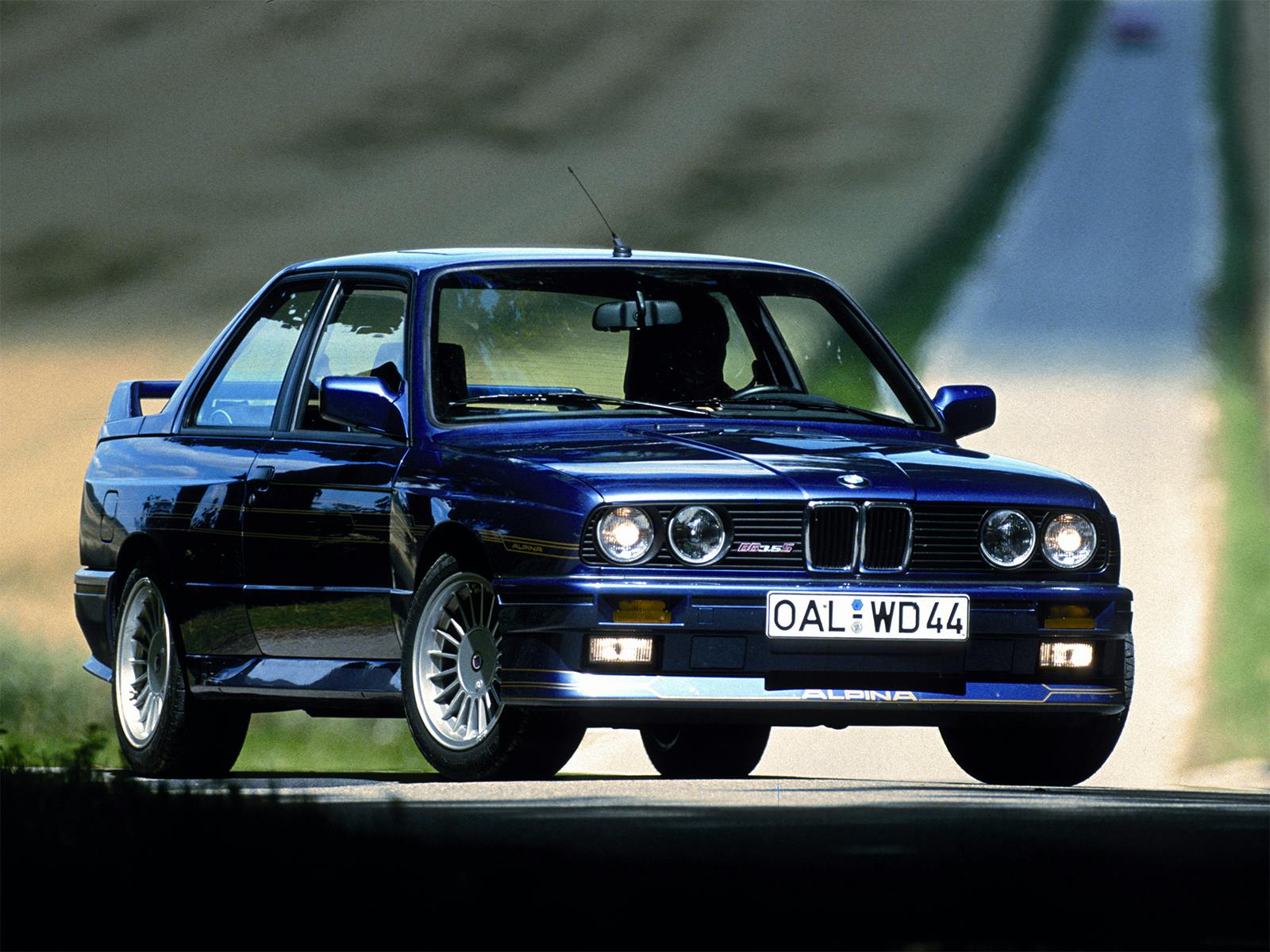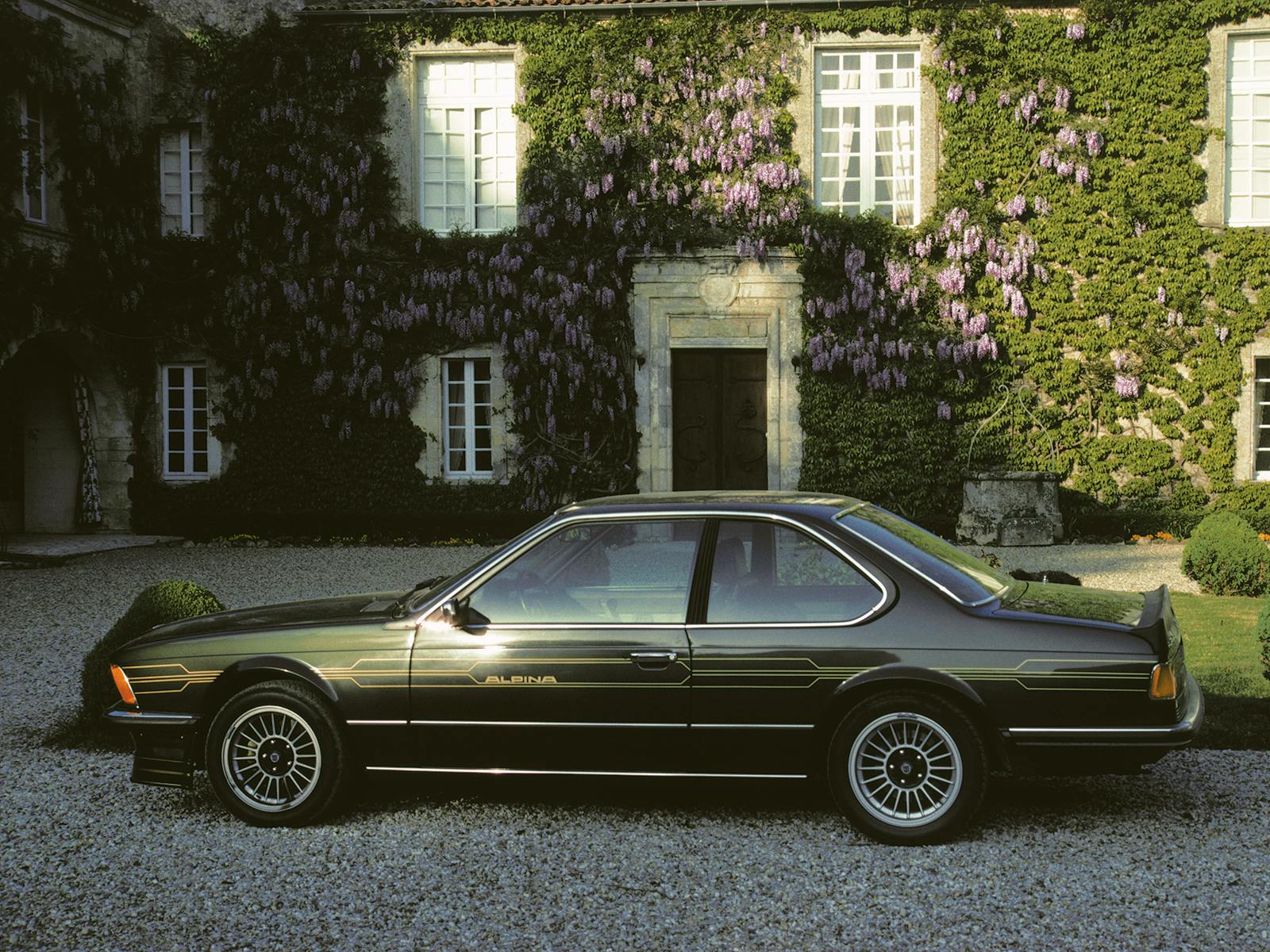What’s the deal with the Alpina market?
Recently, some casual evening scrolling through online auctions led to a surprise discovery—comparatively rare and formerly exclusive Alpina BMWs from the late ’80s through the early aughts can be had for standard BMW M car money. What’s going on? As a well-regarded niche tuner of BMWs for what seems like the entirety of the brand’s modern era, shouldn’t these cars be more expensive?
Something goofy is happening in the Alpina market—or so it seems.
Before digging further, it helps to understand the characteristic differences between a standard BMW, a BMW M product, and an Alpina. We’ll use a 3 Series as an example, but this applies almost universally to other Alpina product lines. Regardless of generation, the M3 can generally be categorized as a sharp-edged, high-performance variant of the standard 3 Series, putting a clear emphasis on chassis balance and a revvy, hard-nosed personality. They’re equally at home rolling around town or scything through a mountain pass.
A 3 Series with the Alpina touch is also considered a-high performance BMW, but the brand’s effort is directed toward low-end torque, high-speed stability, and improved handling without sacrificing ride composure. Think of the Alpina as the autobahn bruiser to the M3’s Nürburgring warrior, especially since Alpinas do away with BMW’s infamous 155 mph speed limiter.
This also extends to interior appointments. If the M3 wears carbon fiber, brushed aluminum, and Alcantara, Alpina drapes the interior in fine leather and dark wood trim. Automatic transmissions are also prioritized over manuals, especially with the implementation of Alpina’s bespoke shift logic. In a sense, Alpinas are the connoisseur’s BMW; more exclusive (and often more expensive) than their M counterpart, appealing to an entirely different clientele than BMW’s M.

This is all mostly applicable to Alpinas produced following the E30 generation, or around 1992 in the U.S. As is the case with another famed German tuner—Mercedes-AMG—prior to that time, things were significantly crazier in Alpina’s Bavarian workshop. Before the rise of BMW’s own M, Alpinas in the ’70s and ’80s were racier and often cutting-edge variants of BMW’s production cars. One of Alpina’s earliest efforts was a hopped-up 2002tii, a pipsqueak hotrod that made headlines when it bested a contemporary Lamborghini Miura and Porsche 911S around the Vallelunga circuit.
Alpina was also an early adopter of turbocharging, offering boosted versions of the E24 6 Series, E28 5 Series, and a twin-turbo iteration of the E34 5 Series. And when the E30 M3 served up DTM dreams with its high-compression 2.3-liter S14 four-cylinder, Alpina shoehorned its 3.5-liter inline-six between the M3’s swollen haunches, creating a wholly different experience.
All these posh and powerful modifications to BMWs sound like a recipe for collector success. Not so, though, at least for post-E30 (mid-1990s) Alpinas. They’re suspiciously cheap relative to the (ostensibly) rarified driving experience they offer and to their more common M-badged cousins. Take this rare 15,000-mile 1994 B3 sedan sold this past February. One of just 687 “regular” E36 B3s made and one of only 339 sedans, it claimed a mere $18,375.
A few months prior, a higher-mileage E36 B3 traded for just $10,395. Five days later, a three-pedal 1997 BMW Alpina B6 2.8 Touring (wagon) sold for $26,160. Compare this to the 98,000-mile 1998 BMW M3 sedan sold just last month. BMW sold 46,525 E36 M3s, so they’re far from rare, but this one still took home $26,543.

Let’s go over that again. A one-of-136, manual E36 wagon undercut a standard production E36 M3 sedan by roughly $350.
Meanwhile, older Alpinas are not selling at curiously low numbers. They’re bringing big money. A 1973 BMW 3.0CSi Alpina B2S on Bring a Trailer collected $255,000 in June, while a 1986 BMW Alpina C2 2.5 5-speed brought $175,000 a few months prior.
Did we just discover a gaping blind spot in the collector BMW market?
As with so many things in this hobby, the answer isn’t straightforward.
Of course, a handful of back-to-back sales does not define a market. Dipping into our trove of data, we tracked U.S. public sales of Alpinas since 2020, broke it down by generation, and then compared it to a comparable BMW M product. For the E36 generation, we found that Alpinized E36s sold in the U.S. do command a premium over the equivalent E36 M3, but that bump is just four percent.

In contrast, early Alpina values are strong given their comparative rarity and performance proposition against their M compatriots. Back to our data, a lone sale of an E28 B7 Turbo since 2020 sold for 200 percent over a regular E28 M5, with an 85 percent average premium paid for an E24 Alpina over the comparable E24 M6. Even the market for later E34-generation 5 Series prefers Alpina, presenting a 63 percent premium over an equitable E34 M5.
The older and bigger Alpinas that command serious premiums appear to exist in a market of their own, while Alpina’s 3 Series struggles to find its footing. The four E30-based Alpinas sold publicly since 2020 carried an average sale price of almost $120,000, representing no measurable premium against an E30 M3. At least from a valuation perspective, it seems that the market considers the E30- and E36-generation Alpina 3 Series an even substitute for M3s.
We’ve got a few theories as to why. Comparable values aside, the buyer of a post-E30 Alpina might not overlap with an “M” buyer as much as we might think, especially when you consider the shop’s focus on luxury, composure, and automatic transmissions. It also may not be productive to equate early six-figure Alpinas with later cars, as the marque’s fundamental ethos underwent a subtle change somewhere around the E30’s lifetime. Alpina exited racing the late ’80s, shifting its emphasis to road cars. Also, it makes sense that the bigger 5 Series fits Alpina’s evolved identity better than the 3 Series, and the market may merely reflect that.
Pure production numbers come into play as well. Alpina’s production of both 3 Series and 5 Series combined from the 1980s through the 2000s grew by an average of 54 percent with each generation. For the 3 Series, this means that compared to the 1117 Alpinas built on the E30 platform, production bloomed to 1550 E36s and then 2289 E46s. Hardly numbers to spook the Toyota Camry, but this simply means supply gradually evens out with demand. So, with greater supply to choose from, and less of the track-oriented identity that BMW enthusiasts and collectors clamor for, those low Alpina 3 Series prices that surprised us at first start to make a bit more sense.
A blindspot? Not really. A good buy? You betcha.
***
Check out the Hagerty Media homepage so you don’t miss a single story, or better yet, bookmark it. To get our best stories delivered right to your inbox, subscribe to our newsletters.






The Alpina E30 M3 sounds cool.
Especially given they swapped in a 3.5. Although arguably it really hurts the balance of the car
Interesting commentary. I will be watching for any Alpinas at Legends later this month.
The low production numbers of the E24 and E28 chassis based Alpinas Turbos still seem to yield good sales numbers. The E34 B10 Biturbo whilst sold more units than its older brothers, had massive performance. (Not much slower than an E39M5). I believe this is the gem in the modern classic zone, late 80s-early90s. Much faster than the fastest E34M5 3.8.